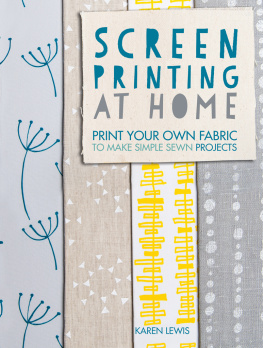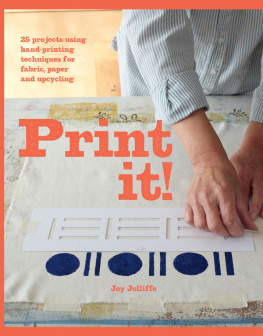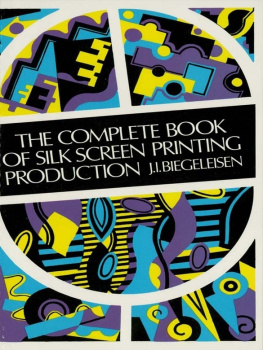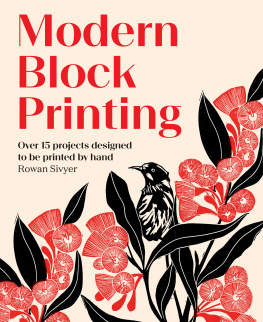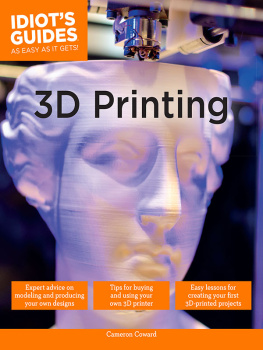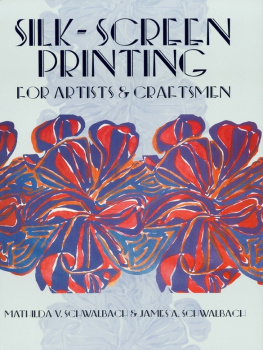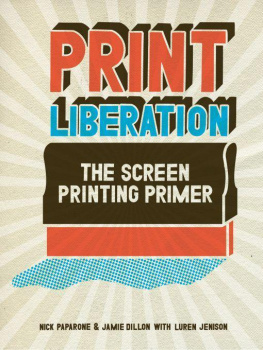Contents
Introduction
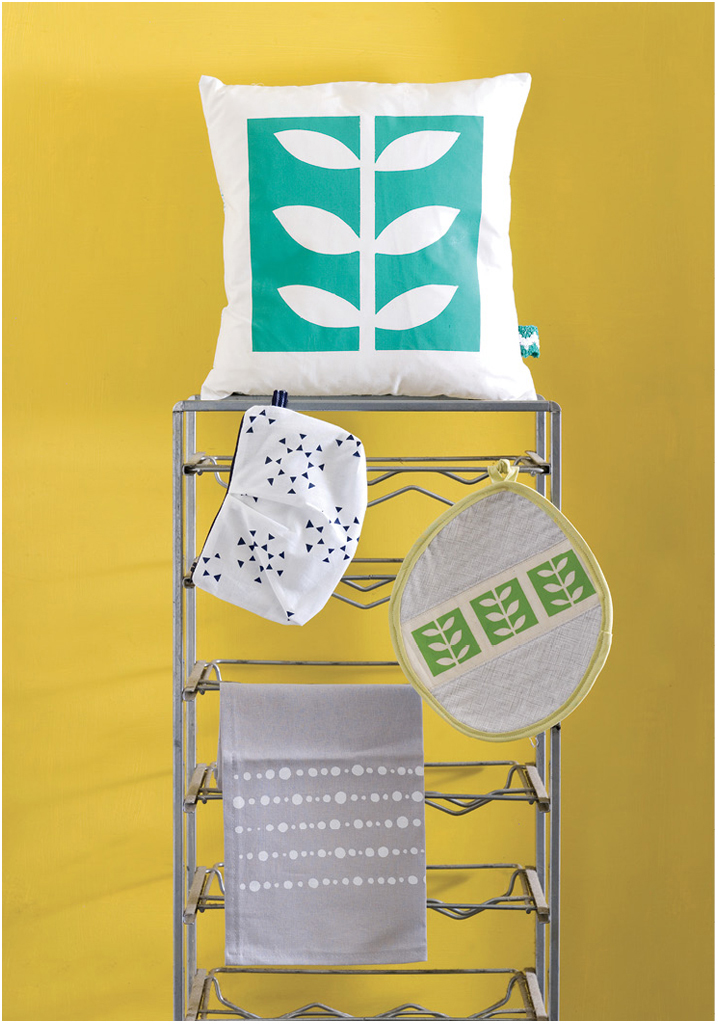
Be warned, screen printing is utterly addictive! About three years ago I took a short course at my local college two hours a week for five weeks and I havent looked back since. From the first minute on the first day I was hooked, and the 8,640 minutes before the next lesson dragged for what felt like an eternity! I just couldnt wait to get back to the studio.
Ever since I was little I have been addicted to fabric, sewing and making, thanks to my Grandma. She had her machine and fabrics out constantly and I used to love delving through the beautiful treasure while she created on her old Singer. A lot later when my love of sewing was rekindled after it had been pushed aside for sport, boys, good times, husband and babies I discovered stunning screen printed fabrics from artists not only in the UK but also in Australia, the USA, South Africa and other far flung places. My creating was now taking place in the internet era, a time when it was possible to source all that wonderful talent from my kitchen table. I was in heaven, and whilst I was in love with sewing these beautifully creative, immensely tactile fabrics, I knew deep down I wanted to be sewing with my own created fabrics.
It was a while again later once work, children and family commitments had subsided before I had the opportunity of trying it for myself. But boy, when I did, something exploded in me and I havent been the same since!
Screen printing is the art of transferring your own images, whether they be simple doodles or more intricate repeat designs, onto a material, such as paper, fabric or ceramic. It is incredibly versatile and personal. There is something immensely satisfying about seeing the design that you sat and doodled being transferred to a screen, followed by the physical process of actually printing it onto your chosen surface. Screen printing allows you to print not one, but multiples of the same design, each one coming out slightly different, which to me is the delight of hand-printed fabric rather than a factory printed roll.
The versatility of hand printed fabric is enormous, from printing one-off silhouettes for a cushion or printing a repeated pattern, to using it in quilting or a number of other sewing projects. It has the mystery of being an incredibly technical process where surely you have to enrol in a college degree with high-tech facilities in order to come anywhere close to success. It certainly can be that complicated, but it can also be the simplest technique ever, where you can make beautiful objects literally from your kitchen table.
This book aims to teach you the simple basic steps of screen printing, from the equipment you need, to step by step instructions of different ways to prepare your screen, with simple projects to create with your beautiful, unique fabric.
I hope you will be as enthusiastic as I am as you work through the process and take delight in creating your own designs. I do apologize now though, as the world around you will change when you start printing. Everything will become an inspiration to you from the shadows the trees make, to the simple patterns of the lines in the road. The world around you will never be the same again!
How to use this book
This book aims to show how you can learn to screen print onto fabric sitting at your kitchen table. Whilst you can screen print onto any surface, were going to look specifically at how to screen print onto fabric.
I will describe the minimum equipment and space that you need to start, several easy-to-do, at-home methods of preparing a screen, and how best to achieve prints from whichever method you choose. All the screen preparation methods in this book use simple and readily available equipment to enable you to successfully print at home with great results.
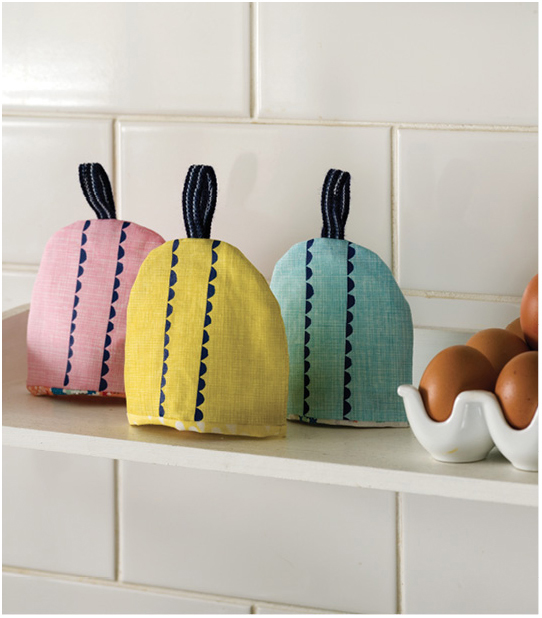
The clear step by step instructions, from what equipment and space you need, preparing your screen and printing, right through to making your fabric suitable for use in the sewing projects, will be covered here. The projects include a short no sew section, with ideas of items you can print directly onto, ready to use as soon as the ink dries. Then the sewing projects give clear design and sewing templates touse to make the item please do feel free to be adventurous and mix them around or use your own prints.
All the necessary templates for the projects can be found in the Design Templates and Sewing Templates sections, as can a list of suppliers from which to source the necessary equipment. Almost everything you need for printing and sewing can be found from a good local art or craft store, or from the online stores listed.

Working space
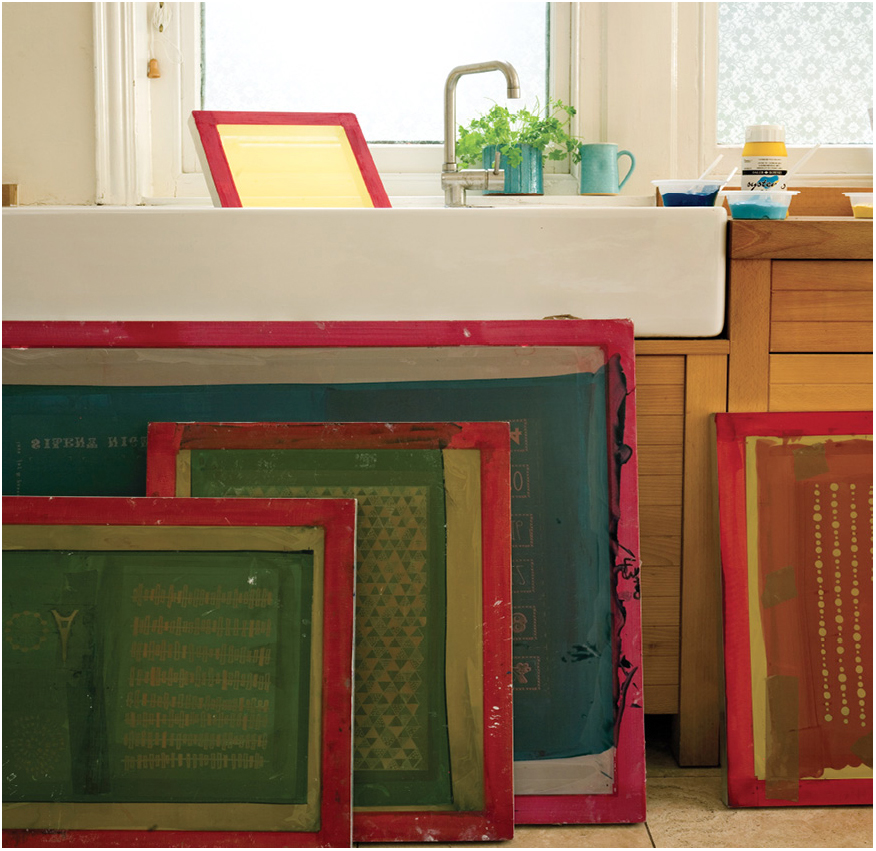
One of the most important considerations in deciding where to print is the space you have around your printing area. Not only do you need a space large enough for your screen, but you also need room to move around it, a drying area for your printed fabric, and a place to rest your screen between prints.
You dont want to rest your screen flat between prints as the paint on the underside will mark your printing area. Instead, attach your screen to hinge clamps and keep your screen raised, or alternatively you could use a wooden baton to rest the screen on.
You need to have plenty of room to keep your area clean and also plenty of space to move your printed items to, whether it be table space, a drying rack or perhaps constructing a temporary line to peg your fabrics from.
As well as deciding where to print, you also need an area to clean your screen. Ideally this would be outside with a hose. You can clean your screen in a large sink or bath, but be mindful that if you are printing regularly the paint can clog the sink.
Essential printing materials

We will go on to discuss the different methods of preparing a screen and what you need for this later in the book, but whatever method you choose, you will need the following basic equipment:
Equipment
Printing screen (1)/ Mesh (2) / Squeegee (3) / Inks (4) / Parcel tape (5)Spatulas (6) / Towels (7) / Fabric paint/Inks mixed with textile medium (8)
1. Screen printing frame
I would always suggest choosing an aluminium frame, as this dries much quicker after cleaning than a wooden frame, and it can be wiped down so you can use it again sooner. They are a little more expensive than wooden screens but wood can be prone to warping, so aluminium is a better investment.
Always choose a frame as big as your space allows. You dont need to use the entire size of your screen for every design, but this does give you the flexibility of making bigger prints if you want.

